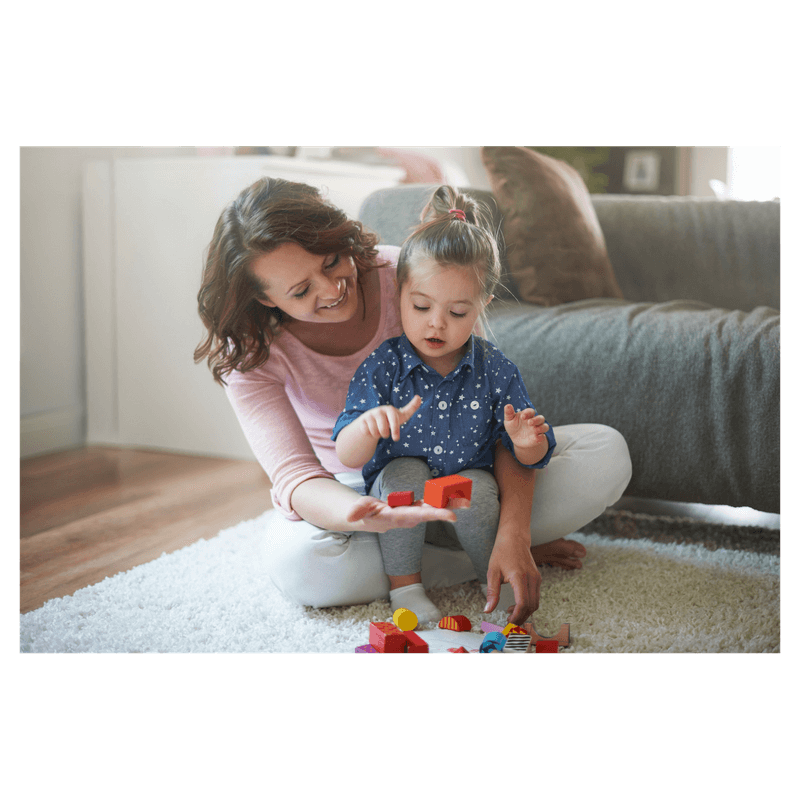Does your little girl get her handbag, take her “cellphone” out and say “Hello, mommy!”, just like mom does? Or maybe your little boy tries to “shave” his face in the bathroom while looking at dad? Children usually imitate what they see happening around them. Imitation can be a powerful way of learning, and it provides a way to practice new skills. What grownups do around children leaves impressions on their developing brain. As toddlers develop, they learn to engage when they imitate. An example would be Zoey, one of our toddlers, who came to class shortly after her first visit to the dentist. She told another 2 year old, Chloe, to sit down. She gave her a cup and a mirror, “Open your mouth. I am going to check your teeth!” She said, “Now you can use your spit cup!” Both toddlers had a great time “playing dentist” that day.

Imitation is a natural way to learn. Treat it as an opportunity. Every interaction between grownups and toddlers can be a chance for imitation.
Things to keep in mind regarding imitation:
- Show repeated movements and reactions
- Explore
- Provide physical activities
- Model household activities
- Model behavior
- Have a routine
- Enhance language development

1. Show repeated movements and reactions
Repeating movements will help toddlers take in information. When practicing and rehearsing every day, activities become easier and easier, which is a sign that a new skill is being built.

2. Explore
Toddlers learn by doing things, not just watching. So, model the use of a spoon, but let your child experience it too. Let her know that it’s ok to be messy sometimes. Making a bit of a mess is part of the learning process as your toddler masters the use of a spoon of fork.

3. Provide physical activities
Model by jumping, crawling and hopping. Your little shadow will want to try it too. This will help her develop motor skills. Your toddler can choose how she wants to go to the car. Does she want to march like a dinosaur? Or jump like a bunny?

4. Model household activities
Toddlers love to learn, copy and help. They will see you moping or sweeping and will want to imitate you. Make it fun while you are doing it and let them try!

5. Model behavior
Model the behavior you want to see in your child. Sometimes, this is not an easy task. The “do what I say and not what I do” way doesn’t show consistency. Toddlers need consistency to learn how to behave. You don’t need to say: “look what I’m doing here”, your child will learn by observing it. That doesn’t mean this will dictate your toddler’s behavior, but modeling behavior is an effective way to pass on values, beliefs and information. Modeling can also teach social skills, interaction with others and dealing with conflicts.

6. Have a routine
Have your toddler with you during your daily routine. Model for him how you brush your teeth, broom your hair and get dressed. Show where the dirty laundry goes. Show him how to unload the dryer and fold the towels. If you want something done in a certain way, you must show how it’s done.

7. Enhance language development
Your little copycat will try to imitate everything you say. So, repetition is key here. Explain how volume and tone of voice works, as “you can be loud while playing with your friends, but not while having dinner”. Explain why. Model how to use words such as please, excuse me, thank you.
Parents aren’t perfect. And that is ok. If you model the “wrong” behavior or if you say something you wish you could take it back, you can try to repair it by explaining consequences. Imitation serves as a basis to develop empathy. Children can learn that parents make mistakes. Mistakes also provide a good opportunity to model how to say: “I am sorry” – when you really mean it!


Trackbacks/Pingbacks